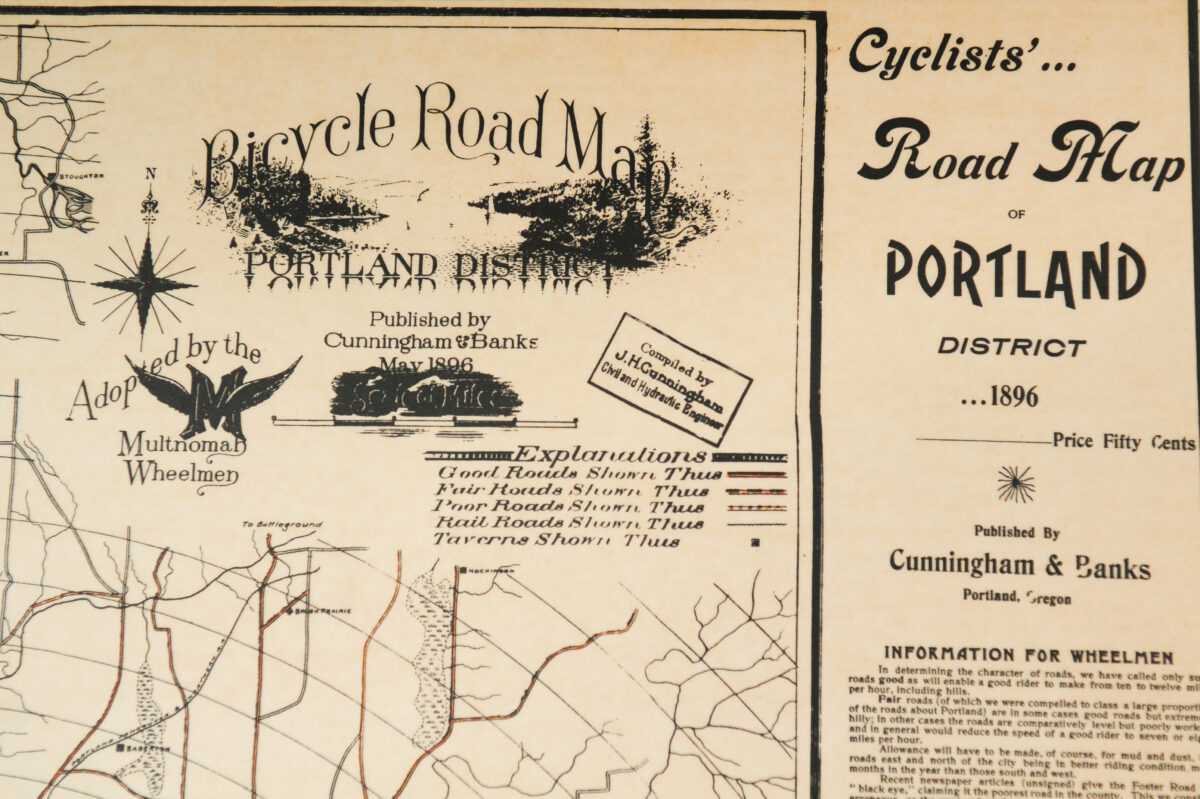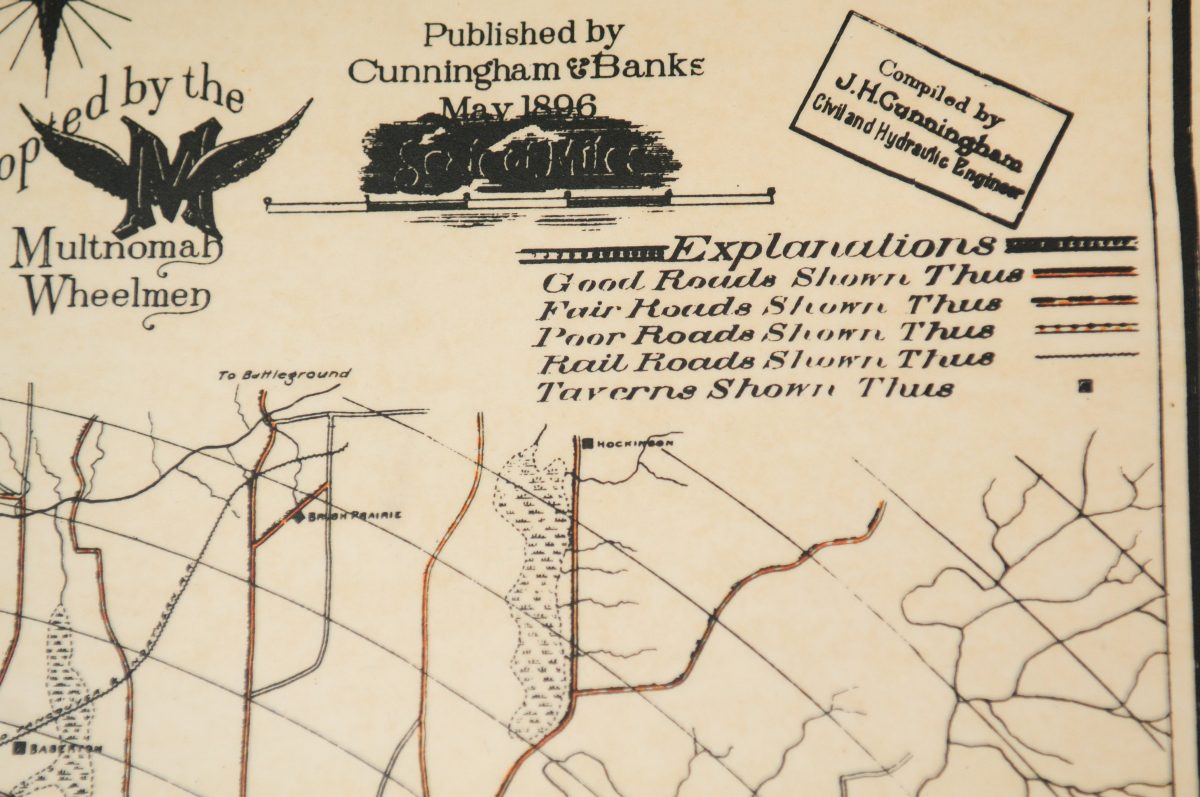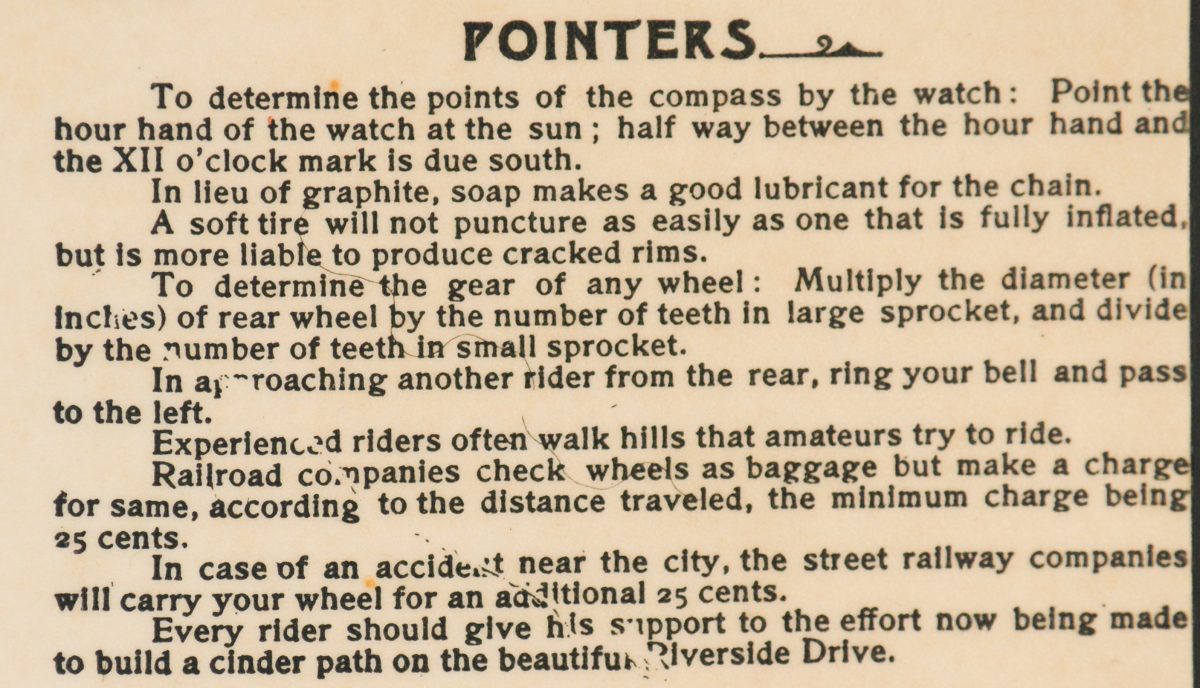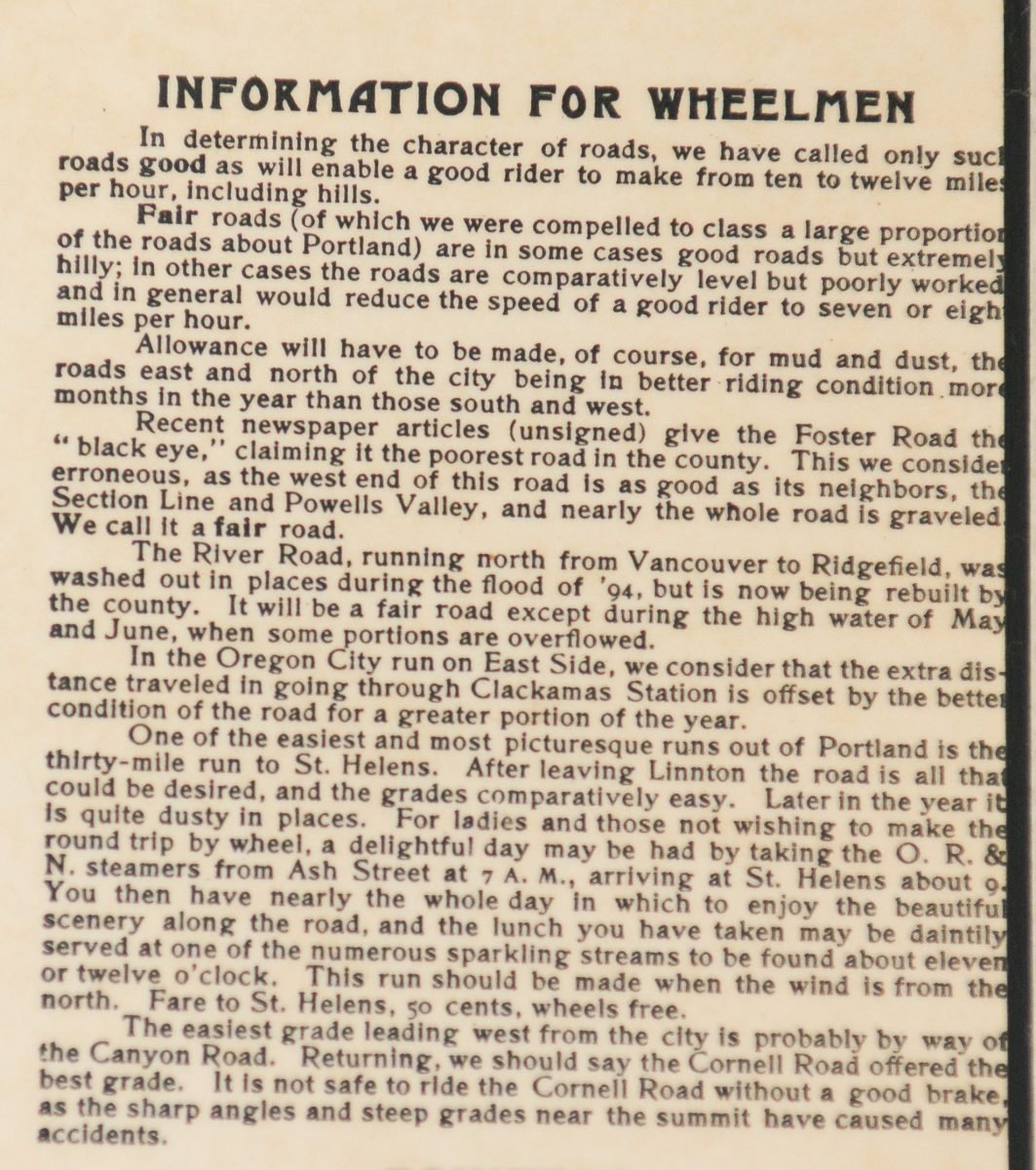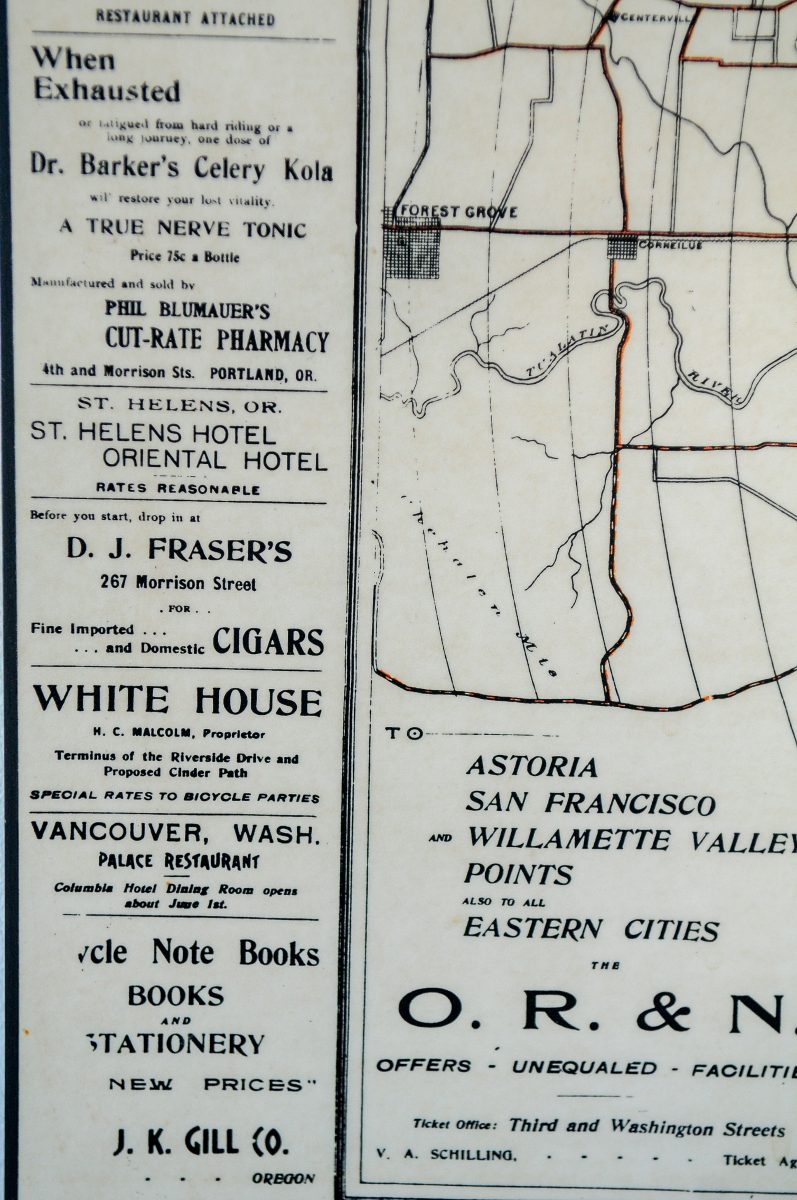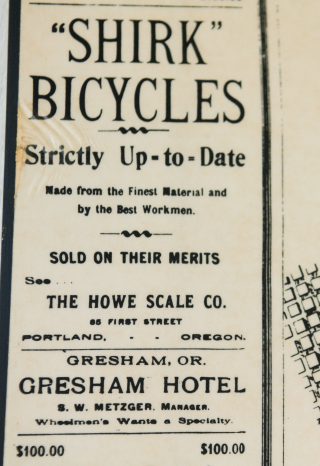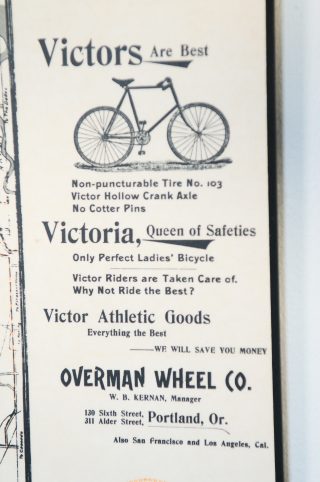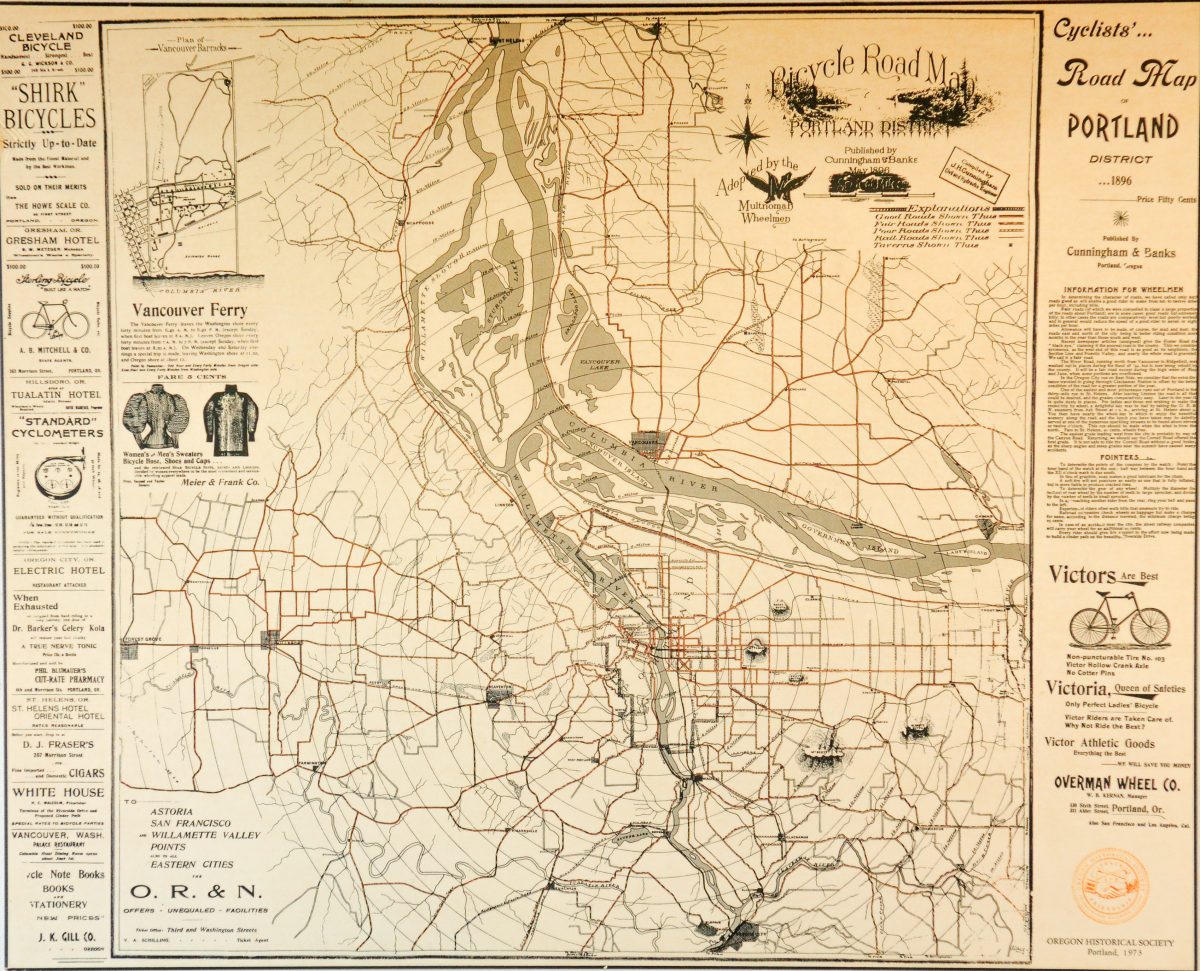
(Photos of map published by Cunningham & Banks)
In 1896 Portland had a thriving cycling culture complete with bike-specific fashion purveyors, bike-friendly restaurants, bike shops, and local businesses hoping to cater to our many “wheelmen” and women.

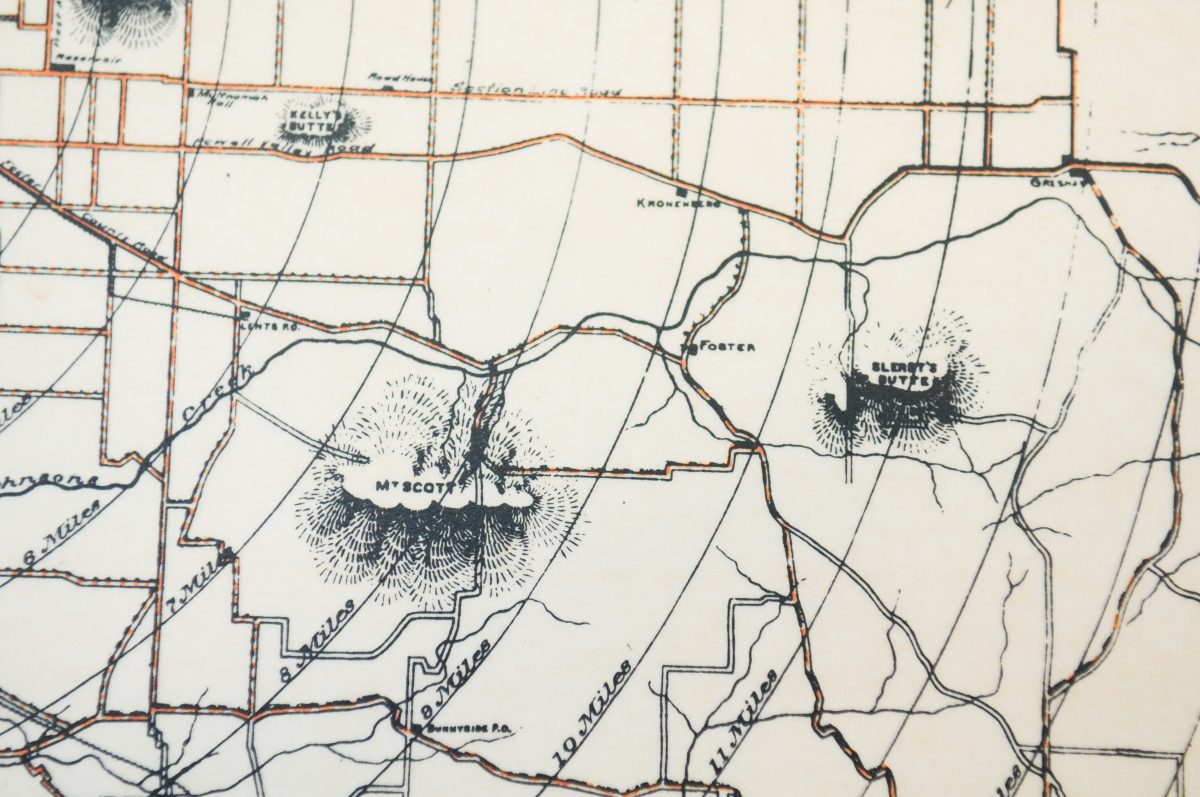

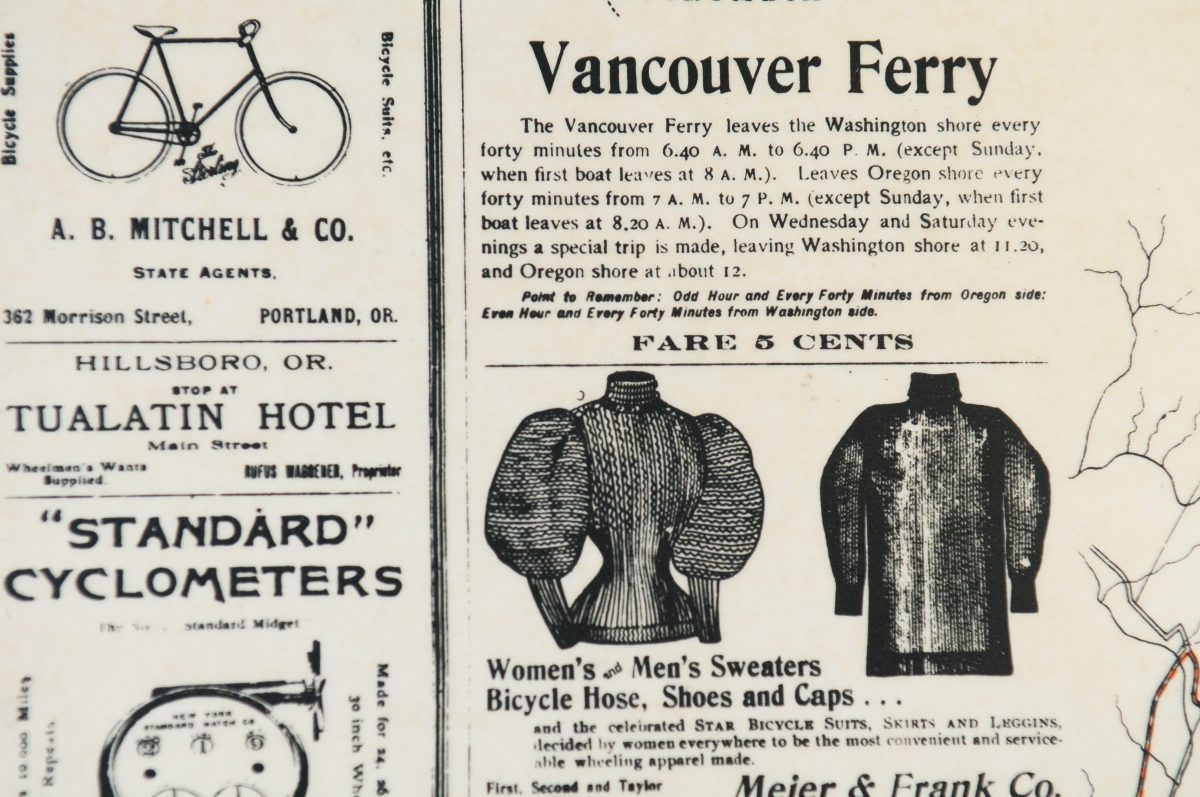
For years now I’ve let my mind wander 122 years into history thanks to the Cyclist’s Road Map of Portland District that hangs from the wall in my kitchen. The Vintage Portland blog posted an image of the map this morning and it reminded me that I’m overdue in giving this map its due here on the BikePortland Front Page. I’ve mentioned it a few times over the years, but it warrants a closer look.
The map, which cost 50 cents in its day, was published in May 1896 by Cunningham & Banks based on data compiled by civil engineer J.H. Cunningham. To give it more credibility, the map was adopted by the Multnomah Wheelmen, a riding club with a cool logo that featured an “M” with wings.
The boundaries were St. Helens to the north, the Sandy River to the east, Forest Grove to the West, and Oregon City to the south. In an effort to help riders gauge distance, concentric circles were drawn at one-mile increments from downtown Portland. There’s also an inset map (at right) of the Vancouver Ferry which promised rides (for five cents) between Oregon and Washington every 40 minutes most weekdays.
A quick look at the map and you’ll notice many of the streets we still use today. Keep in mind this was 1896. Most of the roads in the region were still unpaved and our streetcar network was in the middle of its lifespan. One thing I love about this map is that pre-dates automobiles. The first car dealership in America didn’t open until 1898 and my cursory research tells me Portland didn’t get one until the early teens of the next century.
This is great proof that — as our friend and award-winning journalist Carlton Reid has so exhaustively documented — roads were not built for cars.
Beyond lines on a map, one value of this artifact is the window it provides into the cycling culture of the time. The map’s legend, the information and “pointers”, and advertisements are a ton of fun.
The legend offered three levels of roadway conditions: good, fair and poor. The only thing deemed important enough to have its own symbol on the map was the location of taverns.
On the right side are two boxes of text titled, “Information for Wheelmen” and “Pointers.”
They offered route advice:
Allowance will have to be made, of course, for mud and dust, the roads east and north of the city being in better at riding condition more months in the year then those south and west.
Recent newspaper articles give the Foster Road the “black eye,” claiming it the poorest road in the county. This we consider erroneous, as the west end of this road is as good as it neighbors…
Advertisement
One of the easiest and most picturesque runs out of Portland is the 3 mile run to St. Helens. After leaving Linton the road is all that could be desired, and the grades comparatively easy. Later in the year it is quite dusty in places. For ladies and those not wishing to make the round-trip by wheel, a delightful day maybe had by taking the O. R. & N Steamers from Ash Street at 7:00 a.m., arriving at Saint Helens around 9. You then have nearly the whole day in which to enjoy the beautiful scenery along the road, and a lunch you have taken may be daintily served at one of the numerous sparkling streams to be found… This run should be made when the wind is from the north. Fare to St. Helens, 50 cents, wheels free.
The easiest grade leaving west from the city is probably by way of the Canyon Road. Returning, we should say the Cornell Road offered the best grade. It is not safe to ride the Cornell Road without a good break, as the sharp angles and steep grades near the summit have caused many accidents.
Technical advice:
In lieu of graphite, soap makes a good lubricant for the chain.
A soft tire will not puncture as easily as one that is fully inflated, but is more liable to produce a cracked rim.
A few basic points on riding etiquette and style:
In approaching another rider from the rear, ring your bell and pass to the left.
Experienced riders often walk hills that amateurs try to ride.
A call-to-action for advocacy:
Every writer should get his support for the effort now been made to build a cinder path on the beautiful Riverside Drive.
And we even see that the bike-transit connection was alive and well back then:
In case of an accident near the city, the street railway companies will carry your wheel for an additional 25 cents.
The advertisements illustrate that Portland business owners saw an opportunity to cash in on the cycling craze. A pharmacy on SW 4th and Morrison touted a product called Dr. Barker’s Celery Kola that, for 75 cents a bottle, would, “restore lost vitality” if you were “exhausted or fatigued from hard riding.”
The White House, a restaurant on Riverside Drive promised “Special rates to bicycle parties.”
A cigar shop at 267 SW Morrison encouraged riders to drop in for a pre-ride smoke.
Meier & Frank sold women’s and men’s sweaters, “bicycle hose,” shoes, and caps.
The Overman Wheel Co. (which had two Portland locations) promoted their Victor brand of bicycles that came with “non-puncturable” tires, cotterless cranks and a hollow crank axle.
I wish I had a bunch of copies to sell; but I’m not even sure where you can one get these days. Years ago you could get one from the Oregon Historical Society store; but I haven’t seen it on there for a long time. The Street Trust also used to sell copies.
I love so much about this map. It proves our roads were not built for cars and that there’s been a strong cycling community in Portland for well over 100 years.
And don’t you just pine for the days when Highway 30 to St. Helens was nice and peaceful and you could hop on a “steamer” ship to get back to downtown after lunch next to a stream?!
— Jonathan Maus: (503) 706-8804, @jonathan_maus on Twitter and jonathan@bikeportland.org
Never miss a story. Sign-up for the daily BP Headlines email.
BikePortland needs your support.
